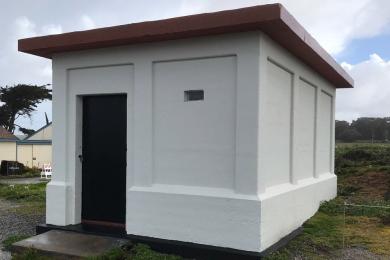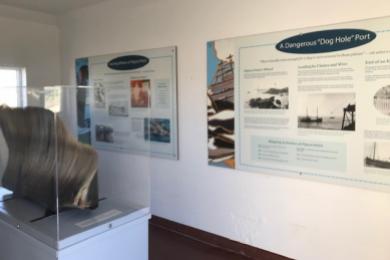It was only 16 years later, in 1888, when the original lamp was replaced by one that burned kerosene. However, it took a few more years until the Oil Bunker was built in 1905 and the explosive new fuel could be stored safely away from the base of the lighthouse tower.
Before converting to electricity, the lamp changed one more time while still using kerosene. In 1912, the lamp was converted to an incandescent oil vapor (I.O.V.) lamp similar to the way a Coleman lamp works today with pressurized fuel and a mantle. After this conversion, the light of Pigeon Point Light House was rated at 160,000 candlepower with a visibility of 18 miles.
This spring (2019), State Parks requested help to refurbish the Oil Bunker inside, outside and with new interpretation. Below are a few pictures of the refurbished building.
The new exhibit more effectively connects the bunker to the existing Interpretive Center in the Fog Signal Building. While the Center focuses on reasons for establishing the lighthouse and on its functions, the Bunker's display provides insight into several significant and unique aspects of Pigeon Point’s history. Several panels were developed with focus on: family life of keepers at Pigeon Point; the commercial wharf and dog-hole port which formerly existed; the shore whaling station which operated from 1862 to 1895; and the fuels which were used to light Pigeon Point’s beacon prior to electricity in 1926.
Your donations, online and at the park, and your purchases in the parks’ store, helped us refurbish this building .. Thank you for your continued support; we can’t do this work without you.




